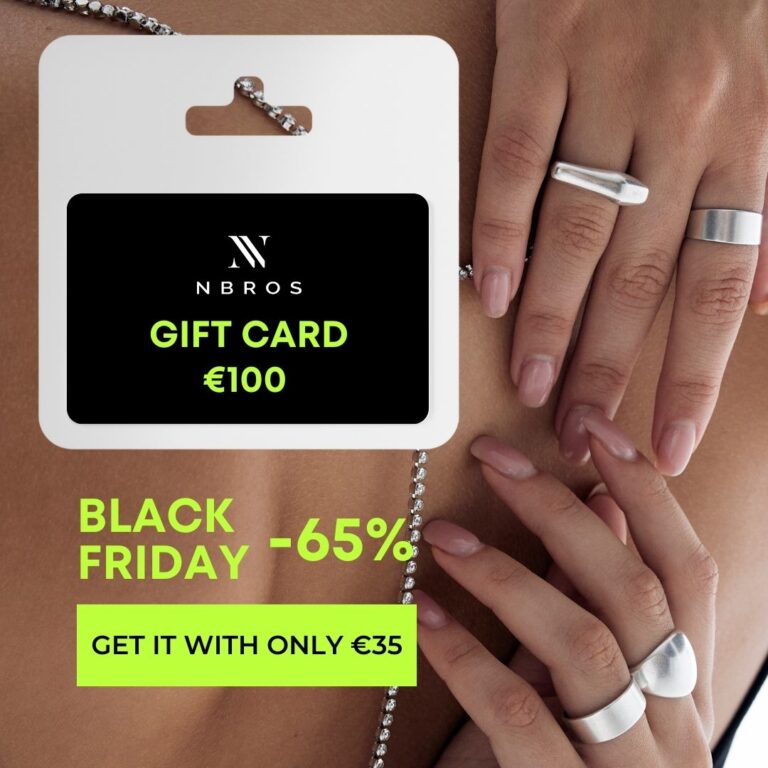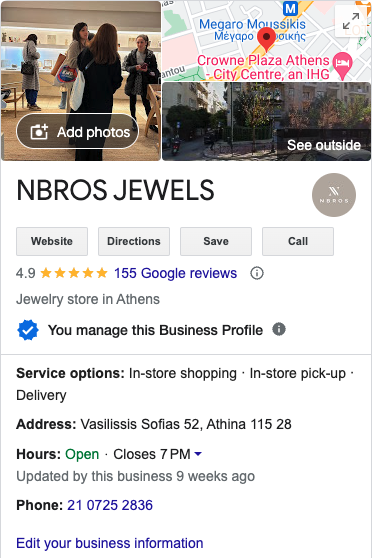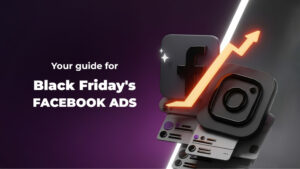Knowing how to apply effective Black Friday Marketing strategies presents a golden opportunity for e-commerce businesses to boost sales and engage customers in unique ways. To harness the full potential of this retail frenzy, it’s essential to have a well-thought-out strategy. In this comprehensive guide, we’ll explore every aspect of Black Friday, from preparation and execution to post-event evaluation, revealing the tactics and insights that can make your Black Friday campaign a resounding success.
Before deep diving into Black Friday marketing strategies, let’s answer some of the most frequent questions about the concept of Black Friday.
Is Black Friday a marketing campaign?
Black Friday is not a marketing campaign in itself, but it is often used as a significant marketing event by retailers and businesses. Black Friday originally started as a post-Thanksgiving shopping day in the United States, but over the years, it has become synonymous with major sales, discounts, and promotions offered by retailers.
Many businesses and retailers use Black Friday as an opportunity to attract customers with special deals and offers, often marketing these promotions heavily in advance. They create marketing campaigns to promote their Black Friday sales, using various advertising channels such as television, radio, print media, social media, email marketing, and more to reach a wider audience and generate excitement.
So, while Black Friday itself is not a marketing campaign, it has become a key focal point for businesses to run marketing campaigns and engage with consumers by offering attractive deals and discounts to boost sales.
If you want to learn more about the history behind Black Friday, please read our post on Instagram about it.
How do companies benefit from Black Friday?
Companies can benefit from Black Friday in several ways, by capitalizing on increased sales, acquiring new customers, enhancing brand awareness, and leveraging data to improve their operations. Below are the reasons why we always push our e-commerce clients to invest into Black Friday marketing strategies:
- Boost in Sales: Black Friday is known for driving a significant increase in sales as consumers actively seek out deals and discounts. E-shops can generate substantial revenue during this time, which can help recover from the drop in sales they saw during September and October.
- Clearing Inventory: Black Friday provides an opportunity for businesses to clear out excess inventory or older merchandise, making room for new products. That’s true! Having products in stock costs you money and space, so clear out your product inventory by providing huge discounts on products you want to get rid of.
- Customer Acquisition: Black Friday is an excellent time to acquire new customers, especially for new e-commerce businesses. The attractive deals and promotions can draw in first-time buyers who may become repeat customers in the future.
- Brand Awareness: Running marketing campaigns prior to Black Friday will increase brand visibility. Creative marketing campaigns can help businesses stand out in the crowded market and make a lasting impression on potential customers.
- Data Collection: Black Friday sales generate valuable data about customer preferences and shopping behaviors. Companies can use this data for future marketing campaigns, product development, and inventory management. How else will you decide what are the most profitable channels and what products are your best sellers?
- Competitive Advantage: Participating in Black Friday allows companies to stay competitive in the market. Consumers expect to see promotions and deals during this time, and companies that don’t participate may lose out to competitors.
- Clear Revenue Goals: Black Friday provides a clear and time-bound opportunity for companies to meet revenue goals. This can help with financial planning and budgeting for the year ahead.
- Market Testing: Companies can use Black Friday to test new products, pricing strategies, or marketing tactics. Black Friday marketing strategies that we’re planning to test this year are huge deals on Gift Cards and products in bundles.
How long does Black Friday last?
Starting your Black Friday deals as soon as November hits will not necessarily increase your sales. The reason is that people tend to do research and wait for other e-commerce businesses and retailers to launch their offers. Read more details about the suitable timeframe in this paragraph.
How do you attract customers to Black Friday?
Attracting customers to Black Friday requires a strategic approach that combines effective marketing and enticing offers. Of course, the channels and budget are very crucial, but the offer itself is what will make the difference in your revenue.
That said, take a look at the ideas of offers that we have gathered here.
How do you retain customers after Black Friday?
Evaluating how your e-commerce business did on Black Friday and retaining customers after Black Friday is crucial for building long-term relationships and ensuring repeat business. In the section on what to do after your Black Friday, you’ll find a few marketing strategies that we think are quite useful.
Enough talking about why it is important to implement marketing strategies for this year’s Black Friday. Let’s move to the juicy stuff!
Black Friday marketing strategies: Pre-Black Friday decisions
1. Data-Driven Decisions
Begin your Black Friday preparations by organizing your product data, including profit margins. Analyze how much you can afford to discount while still maintaining profitability. Here’s an example of how one of e-commerce clients prepare for Black Friday:

What is a Profit Margin?
A profit margin is a financial metric that expresses a company’s profitability as a percentage of its total revenue or sales. It measures how much profit your business makes for each dollar of revenue it generates. In other words, it indicates the portion of revenue that remains as profit after all expenses, including the cost of goods sold (COGS), operating expenses, taxes, and interest, have been deducted.
The profit margin is typically calculated as follows:
Profit Margin (%) = (Net Profit / Total Revenue) x 100
Where:
- Net Profit is the total profit a company earns after subtracting all expenses.
- Total Revenue is the total income generated by a company through its primary operations, such as sales of products or services.
Profit margins are essential for assessing a company’s financial health and performance. Higher profit margins indicate that a company is efficient in managing its costs and generating profit from its operations. Conversely, lower profit margins may suggest challenges in controlling costs or pricing strategies. Different industries have varying average profit margins, so it’s essential to consider industry benchmarks when evaluating a company’s profitability.
2. Keep the Ads Running
Even if your Return on Advertising Spend (ROAS) isn’t exceptionally high leading up to Black Friday, continue running ads. This is crucial for maintaining your ad algorithms and keeping your remarketing audiences fresh and engaged. You can lower your budgets because we know how tough the past two months have been for e-commerce businesses, but do not stop your campaigns. You can opt-in for Traffic, Awareness (Reach), and PageView campaigns, which are considered cheaper than Conversion campaigns.
Now, to have a better idea about budgeting, you can consolidate our article “How Much Does it Cost to Advertise on TikTok?”.
3. Collaborate and Brief Your Team
Success on Black Friday requires a coordinated effort across your entire team. This includes not only your in-house team but also the performance marketing agency you’re working with. In fact, consider having everyone sit down together to brainstorm ideas and ensure everyone is on the same page. A well-coordinated team is your greatest asset.
This is us working with a client on our Black Friday marketing strategies:

4. Secure Influencer Partnerships
If you work with influencers, book them well in advance. The sooner you arrange these partnerships, the better you can plan and integrate their content into your overall strategy. One of the most effective marketing strategies for Black Friday is to provide an extra discount coupon code, unique for each influencer. Why so? Because when checking out your Google Analytics data, you can easily spot the best-performing influencers in terms of revenue. Traffic is good, but what we need is sales, right?
5. Check Delivery Times
One common pitfall during Black Friday is unexpected delays in delivery. Review your delivery times from previous years and update your website to notify customers about possible delays. Transparent communication builds trust and helps manage customer expectations.

6. Decide on Channels for promoting your Black Friday deals
Determine which channels you’ll utilize for Black Friday promotions. Will you leverage all paid channels, including TikTok, Meta (formerly Facebook), and Google? Are email newsletters, SMS marketing, or in-store offers part of your strategy? Each channel has its strengths and audience, so choose wisely.
In the majority of the cases, we use a 360 approach leveraging all the channels we’ve been active during the past months:
- Paid Social Ads before Black Friday (Meta, TikTok, Pinterest/Twitter/Linkedin depending on the industry and the markets you’re in)
- Google Ads & Paid Social during Black Friday
- Newsletter announcing the Black Friday deals
- SMSs announcing the deals
- Influencers with a coupon code during Black Friday
- In-store offers
- Organic Social Media postings
- Live Chat for replying to questions

7. Set a Budget
Once you’ve selected your channels, establish a budget. This step is crucial because it ensures that your advertising efforts are financially sustainable. Take into account the nature of your business and the expected return on investment (ROI).
This is a significant step, and you must calculate everything based on your past data. At OKisdigital, we suggest clients keep track of Return on Advertising Spend even with influencers.
Keep in mind that your budget should be at least 20% higher than during normal months. That’s because there is way too much competition. If you’re selling jewels, it doesn’t mean you compete only with other e-shops that sell jewelry. In fact, you’re competing even with businesses that sell car accessories because you’re competing for “eyes” (impressions) of users spending time online.

8. Prepare Your Website
Engage your developer to ensure that your website can handle the anticipated traffic surge. Collaborate with your hosting provider to optimize performance and reduce the risk of crashes or slow loading times.
9. Plan for Meta Ads
It’s worth noting that Meta (formerly Facebook) ads during November tend to be 43% more expensive than in other months. The cost per thousand impressions (CPMs) is notably higher. However, the key takeaway here is that people are more willing to buy during this period. Factor this into your budget and expectations for ROI.

10. Leverage your Social Media presence
Ads will get you the purchases you desire, but without a solid social media presence ads cannot make magic. You need to show people that your e-commerce business is trustworthy. Keep posting at least 1-2 times per week. Stay active on social media platforms and engage with your customers. Share valuable content, run contests, and respond to comments and messages promptly.
11. Define how long Black Friday Offers will last
Choosing the right timeframe for your Black Friday campaign is critical. In recent years, Black Friday has evolved beyond a single-day shopping event.
With the e-commerce industry experiencing sluggish sales in the preceding months, many retailers have extended the Black Friday period to encompass the entire month, dubbing it “Black Friday Month.”
However, it’s essential to recognize that the initial days of November may see more browsing than buying, as consumers tend to hold off until they can compare offers from various retailers.
Therefore, an optimal duration for Black Friday promotions often spans 10-15 days, culminating in Cyber Monday, when shoppers make their final purchasing decisions. This extended window allows consumers to make informed choices while still enjoying significant discounts and deals.
Keep in mind that many consumers also use this time to make their Christmas gift purchases, making the extended Black Friday period an essential opportunity for both businesses and shoppers alike.

Effective Black Friday Offer Ideas
Now let’s think of the irresistible offers that we have gathered below.
Tip: Do not increase the prices before dropping the Black Friday deals. Consumers are not stupid, you’ll break their trust this way. However, if you really need to do so, then display a lower price within the last 30 days. Be honest.
12. Early Access Offers
Build anticipation by running ads promoting “Subscribe for early access” or “Subscribe for Black Friday” well before the event. This not only engages your audience but also generates excitement and loyalty.

13. Black Friday Pre-Offer
Creating a 48-hour pre-offer with a passcode sent through newsletters or showcased on social media is an effective way to reward loyal customers and incentivize early purchases.
This is the artwork we did for a client of ours:

14. Bundle Discounts
Offering bundles of 5-10 products with substantial price discounts can encourage customers to explore additional products, ultimately increasing the average order value.
15. Category Discounts
Tailor discounts based on product profit margins, using data from your database tool. This data-driven approach ensures that your discounts are both attractive to customers and profitable for your business.
Examples of Black Friday Category Discounts:
- From Monday to Thursday, 40% off all Coats
- Black Friday day, with every purchase of a t-shirt, get one for free
16. Loss Leaders
Identify 1-3 loss leader products with irresistible discounts. These are products sold at a significant loss to attract customers, with the expectation that they will purchase additional items. Implement a limit of one purchase per person to drive urgency.
17. Gift Cards with Extra Value
Offering gift cards valued at 50£/€ for a 50% discount is a clever tactic. Customers effectively pay half the price for gift cards that they can give to friends and family. To prevent misuse, include a disclaimer that these gift cards can only be used for others, not for themselves. Implement a limit of one purchase per person.

18. First Purchase Coupons
Include additional coupons for customers’ first purchases. This strategy has been proven effective throughout the year, increasing the conversion rate for new customers.
This is how we implemented it on our customer’s website onlysport.com.au.

19. Discounts for In-Store Pickups
Leverage discounts for in-store pickups, a tactic that has shown significant success year-round. Customers appreciate the convenience of online shopping coupled with the flexibility to pick up their orders in person.
20. Give a Gift Above X Amount
Consider offering a free gift for purchases above a certain amount. This strategy, which you may use throughout the year, can be particularly effective during Black Friday to sweeten the deal for customers.
21. Exclusive Coupon Codes for Remarketing
Create exclusive coupon codes for remarketing ads, targeting people who have visited your website or social media profiles but haven’t made a purchase yet. Send these codes to your newsletter subscribers to incentivize conversions.
22. Donations for a Good Cause
Show your commitment to social responsibility by pledging to donate a portion of Black Friday sales to a charitable cause. This not only resonates with customers but also promotes your brand as socially conscious.
23. Tiered Discounts
Implement tiered discounts based on spending thresholds. Customers are more likely to increase their order value to unlock higher discounts. Here are a few tiered Black Friday marketing strategy examples:
a) A customer who spends £50 might get a 10% discount, while a customer who spends £100 might get a 30% discount.
b) A customer who spends £50 might get a £5 discount, while a customer who spends £100 might get a £15 discount.
How to decide which one is best for your e-commerce business? Based on your average purchase value and the average price of your products. If the majority of your products are priced above £50, then it’s better to opt for a monetary discount. While for products priced on average at £20, it would better to prefer a percentage discount.
24. Site-Wide Discount for 24-48 Hours
While offering a site-wide discount for a limited time may not be as profitable for all products, it can be an effective way to create a sense of urgency and drive traffic to your website.
25. Black Friday Exclusive Collection
Create a special collection exclusively for Black Friday. These unique items can generate excitement and encourage customers to explore your offerings.
26. Buy one, get one FREE
The Black Friday 1+1 offer is a golden opportunity not to be missed. It is a proven marketing strategy and an irresistible deal that allows you to entice more customers, enhance sales, and elevate their average order values.

Marketing strategies for the Black Friday period
27. Be Accessible
As a business owner, you should be readily accessible. Be prepared to respond to inquiries from various channels, including email, social media, and even your Google My Business profile. Prompt responses build trust and can help convert leads into sales.

28. Implement Live Chat
Install a live chat feature on your website to assist users in real-time. It’s an invaluable tool for addressing customer queries and providing immediate assistance, which can lead to higher conversion rates. Most of the e-commerce platforms have an easy integration with a chatbot. The one that we suggest is Chatra because of its super easy interface, plus it can be used for free 😉
29. Monitor Inventory
During the Black Friday rush, keeping a close eye on stock levels is paramount. Overselling products not only leads to disappointed customers but can also damage your brand reputation.
However, it is a good practice to leave a few SOLD OUT items visible to your potential customers because it creates a scarcity effect.
30. Consider Shipping Costs
While offering free shipping is a popular tactic, Black Friday might not be the ideal period for it. It’s essential to strike a balance between attracting customers and maintaining profitability. Analyze your shipping costs and adjust your strategy accordingly.
In fact, Free Shipping is a too cheap marketing strategy for Black Friday.
31. Use countdown timers on your website
The ones that we prefer the most are either bottom or top bar timers. Obviously, if you’re going to run a Black Friday month, it’s better to avoid it from day one. Prepare the design and make it visible on your website 5-7 days before your Black Friday offers end. In addition, you can use two countdown timers:
- 4-5 days until the day of Black Friday
- 3-day countdown until Cyber Monday
32. Organizing a LIVE Streaming Sale
Another Black Friday marketing strategy is a LIVE Streaming Sale. It is a quite creative way to engage with your audience and boost sales. The first step is to select a platform where you feel most comfortable and have the biggest audience of followers. Next, schedule a live event for your sale and start promoting it with a Call-To-Action “Set a Reminder”.
Let’s say you decide to go live on a Friday from 12pm to 2pm. During this time, you’ll showcase 20 products one by one LIVE. The magic happens when you offer exclusive discount coupon codes for each product. These codes can either be the same or different for each item. What sets this apart is that if someone purchases a product during the LIVE event, they’ll enjoy an even lower price than what’s listed online.
Does it remind you of telemarketing? Well, you’re not the only one. LIVE streaming sales allow you to connect with your audience in real-time, answer questions, and create a sense of urgency. It’s a powerful way to make your customers feel special and keep them coming back for more. So, get ready to go LIVE and make your next sale a truly immersive experience!
Post Black Friday: Retaining Customers after Black Friday & Evaluation
33. Assess Performance
Once the dust has settled, evaluate what went well and what didn’t. Gather insights to identify strengths and areas for improvement. In fact, it is helpful to keep a document with all the marketing strategies you used this year, the budget you spent, and the results you got back in terms of revenue, profit, website traffic, ROAS, best-selling items, and days with the biggest sales.
34. Communicate Delays & Ask for Feedback and Reviews
If you’re experiencing delays in delivering products to customers, proactively reach out to affected clients. Transparent communication demonstrates your commitment to customer satisfaction.
Request Feedback! Encourage customers to leave reviews on your Google My Business Profile and provide feedback on their Black Friday shopping experience. Use this feedback to improve your products, services, and overall customer experience.
The below image is the current status of our e-commerce client, NBROS Jewels. In the beginning, he was afraid to open an account and let people write their feedback, but we insisted and now it is incredible proof that the business is successful. Wouldn’t you feel safe to purchase from an e-shop that’s got a 4.9 rating in 155 reviews? We do.
Being transparent and open to feedback might not be in the Black Friday marketing strategies, but we feel it is worth mentioning as a long-term tactic.
35. Apply Successful Marketing Strategies to your upcoming holiday campaigns
Take the best-performing strategies from your Black Friday campaign and apply them to the upcoming holiday season. Maximize your sales and customer engagement by capitalizing on what worked.
36. Keep using Remarketing Ads
Use remarketing strategies to reach out to buyers and try to sell more products relative to their past purchases. Also, keep running remarketing campaigns targeting customers who visited your e-shop during your Black Friday but didn’t make a purchase. Retarget them with relevant ads and offers to encourage them to complete their purchase.
37. Implement a Loyalty Program
Promote a loyalty program that rewards customers for their continued patronage. Offer points for each purchase that can be redeemed for discounts, free products, or exclusive access to deals.
There are plenty of them to chose, like Jumper.Ai, Open Loyalty and Smile.io. However, it’s best if you do a research before selecting one based on the volume of your sales and of course the e-commerce platform that you use. You can read more in this article that we find quite explanatory.
To sum up…
In conclusion, Black Friday is a pivotal moment for e-commerce businesses. By adopting a strategic approach and considering factors such as data analysis, channel selection, creative offers, and customer engagement, you can unlock the full potential of this shopping extravaganza. With a well-executed Black Friday campaign, you can not only drive sales but also build lasting customer relationships that extend well beyond the holiday season.






